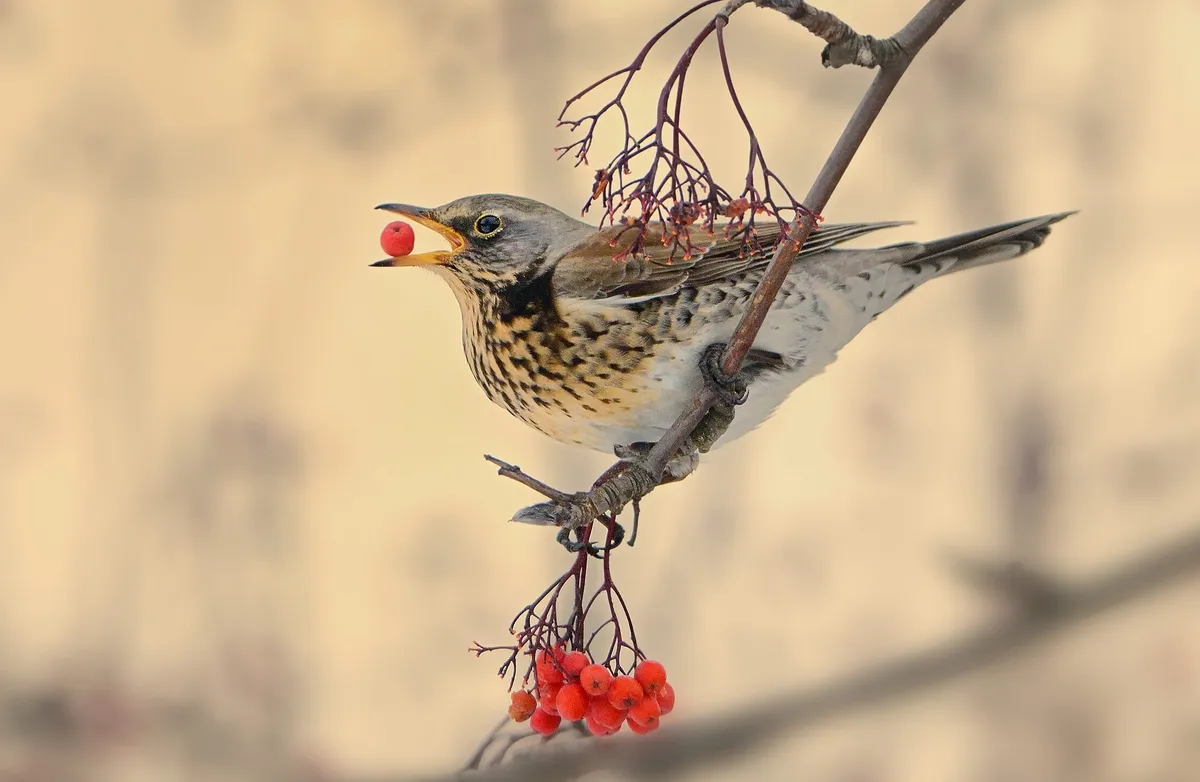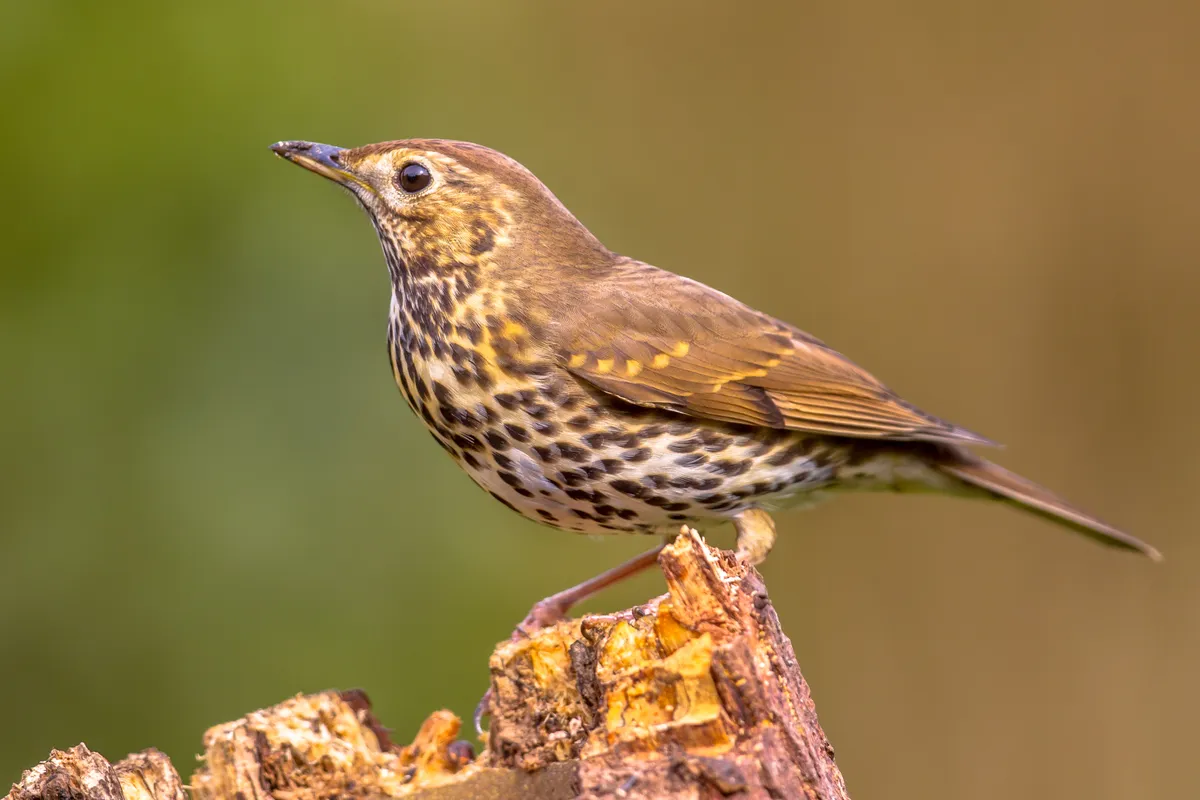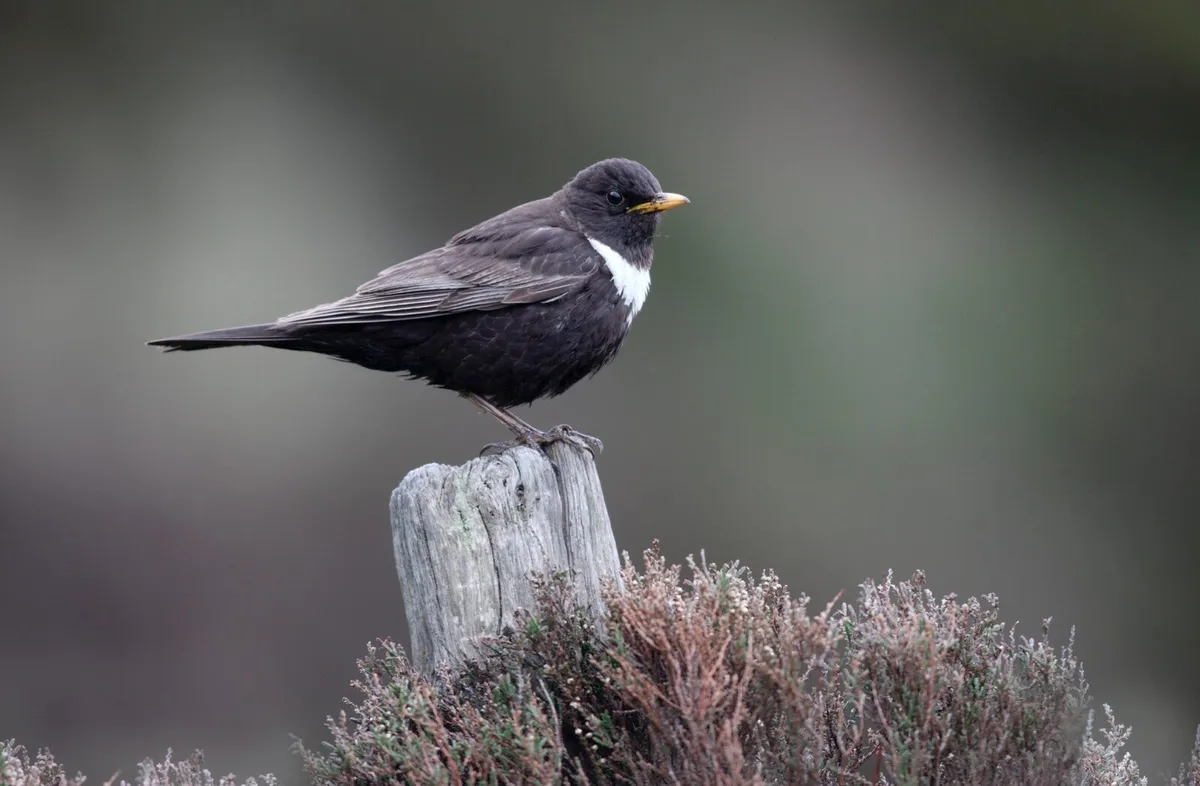Did you know that the blackbird belongs to the thrush family? So too does the upland-dwelling ring ouzel. In fact, six species of thrush can be spotted in the UK – and five of these through the winter months.
In this guide, we take a closer look a this family of birds, revealing facts about where and when to see them, their size, calls, and what they eat.
Interested in finding out more about Britain's birds? Check out our guides to geese, waders and seabirds.
Love your garden birds
Help your garden birds stay healthy throughout the seasons with our expert guide on how to care for wild birds, including the best foods to feed the different species and tips on how to attract birds to your garden.
UK thrush species
Redwing, Turdus iliacus
A winter visitor from Russia and Scandinavia, this small thrush appears in flocks of 10–50 birds plundering berries and windfalls, but it is shy and easily spooked. Redwings travel at night, even over cities, so listen for icy “tzeeee” calls raining from the dark skies. While foraging in daylight, its call has a rounded “hope” note.

Fieldfare, Turdus pilaris
Another winter visitor that gorges on hedgerow and garden berries, the fieldfare is larger than the redwing, with a blue-grey head and tail either side of a chestnut rump. Flocks in large numbers fill the stark winter landscape with movement. Its raucous “chacka-chacka-chacka” call is a giveaway.

Blackbird, Turdus turdus
One of Britain’s most widespread garden, park and woodland birds – and still common, thankfully, as it rummages noisily in leaf litter. The male is black, the female brown. Though we don’t hear its glorious song in winter, listen for its metallic “tuck-tuck-tuck-tuck” contact/alarm call, especially at dusk.

Learn more in our garden bird guide: how to identify common birds and what to feed each species.
Song thrush, Turdus philomenus
With its perky upright stance and streaked chest, the song thrush is still a regular sight on playing fields, lawns and woodland edges, hunting worms and snails. It has suffered severe declines over the past 50 years and needs wilder garden and parks – with no pesticides – in order to thrive.

Learn more about how to make your garden wildlife-friendly.
Mistle thrush, Turdus viscivorous
Superficially resembles a large song thrush and inhabits the same sort of habitats. Its loud, rapid clicking flight call is like an old-fashioned football rattle. It is one of the earliest spring singers and the plaintive melody can be heard as early as late December at twilight and on brighter mornings.

Ring ouzel, Turdus torquatus
A summer visitor, and a rare one at that, though it winters as close as southern Europe and a few birds leave it very late to migrate in autumn. A lover of uplands, it nests in crags and escarpments. It is slightly smaller than a blackbird and its white bib is its defining characteristic, as well as a much harsher song and rattling call.


